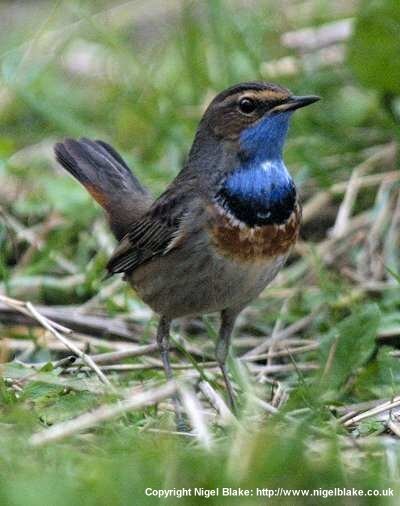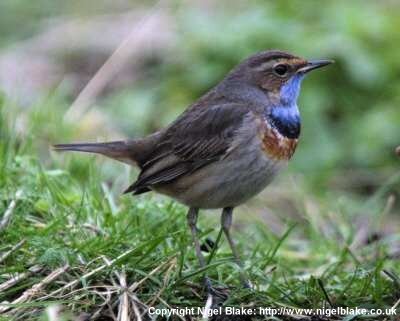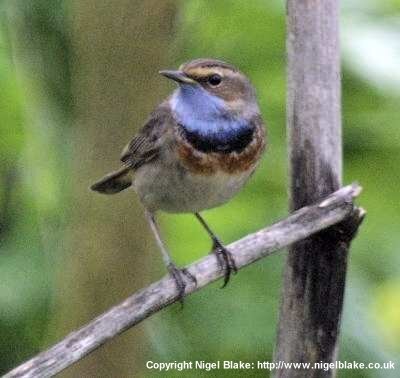The Bluethroat, Luscinia svecica, although classed as a single species can be broken down into two distinct sub-types, the species svecica, mainly from Northern Europe, has a small rusty red throat patch whereas the much rarer (for the UK) species cyanecula has the small white bib or none at all. This species is mainly to be found in south and central Europe. Passage migrants to our shores can be very difficult to find as the birds are usually secretive and skulking. The white-fronted race can be found amongst bushy sites especially near water and reedbeds. Our bird is most likely from the south west of it's distribution and would breed in Western France. The birds tend to move between south and west France with concentrations on Autumn passage in Southern Spain and Portugal where large flocks move into Africa. Return migration starts from late February through to early March. The Bluethroat feeds mainly on invertebrates (mostly insects which it can catch in the air) and also some seeds and fruits. The birds usually occur singularly outside of the breeding season and can be territorial in the winter. The bird has a very full song, is expert at mimicry, and is often full, very loud and varied. The following photographs of the White-spotted Bluethroat were all taken by Nigel Blake on 24th March 2001 in Gunners Park, Shoeburyness. Visit his website at: http://www.nigelblake.co.uk
Photographs all taken on Canon EOS D30 digital SLR, with Sigma 800mm F5.6 lens. Reproduced with kind permission of Nigel Blake: www.nigelblake.co.uk |
Page last updated:
Web Design Graham Mee. ? Copyright of all pages South East Essex RSPB Local Group. All images copyright of owners
The Royal Society for the Protection of Birds. Registered charity no 207076




